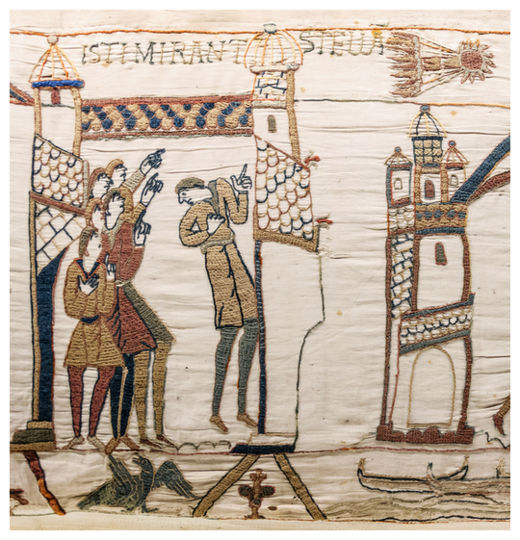Scholars writing in Europe and Asia at the time reported that the year 536 and the years following were bitterly cold. They described conditions that reminded them of an eclipse, and claim that the sun remained "small," with ice frosting up crops even in summer. That year and the decade following were also times of great famine, plague and war - possibly connected to the devastating harvests that left many people hungry, angry, and wandering in search of more fertile lands.
Over at New Scientist, Colin Barras has a terrific article about the scientific quest to discover whether these reports have any basis in reality. For years, scientists have studied tree rings and ice cores, looking for clues that could reveal whether the weather change was caused by a supervolcano (which have been known to cool the planet considerably).
Some promising evidence suggests there may have been a supereruption in El Salvador, which could help explain why Maya settlements nearby mysteriously stopped producing written records for a few years. But that wouldn't explain why the planet remained cold for many years. Usually a supervolcano only affects the weather for a year at most.
But now a geologist named Dallas Abbott has a new theory. Perhaps Halley's comet broke up on its trip past the sun, and ejected some large pieces onto Earth. Those events, combined with a thicker-than-usual tail of debris, could have caused the weather disruptions that people say they experienced in 536 and the years that followed.
Writes Barras:
It's a fascinating theory, and one that we'd need a lot more evidence to embrace as the answer. Still, it's a possibility, and one worth exploring.Enter Dallas Abbott, a geologist at Columbia University in Palisades, New York. Her team has also been studying ice cores from Greenland - and they, like Baillie, have found metallic spherules dating to around 536. But they have also found unusually high concentrations of nickel and tin. Nickel is abundant in extraterrestrial debris and is unlikely to reflect contamination, Abbott says, because it is not typically present in the equipment used to collect the ice. The tin, meanwhile, is suggestive of a comet.
So Abbott's findings have resurrected the comet hypothesis - and she even has a particular suspect in mind. "We know that Halley's comet came by Earth in 530," says Abbott. "And the Chinese record indicates it was unusually bright."
The brightness suggests that on this journey through the inner solar system, Halley's comet passed particularly close to the sun, she says. It would have lost more ice than usual, releasing more of the dust and debris frozen inside. "Halley might have been especially likely to lose material and make dust in 530," says Abbott.
"And it came about during this year that a most dread portent took place. For the sun gave forth its light without brightness, like the moon, during this whole year, and it seemed exceedingly like the sun in eclipse, for the beams it shed were not clear nor such as it is accustomed to shed"
Procopius (Wars, 4.14.5)
Each year, Earth passes through two meteor showers produced by dusty fragments of Halley's comet. Throughout the 530s and into the 540s, these meteor showers may have been unusually heavy, and continued to top-up Earth's atmosphere with cooling dust - and perhaps more.
There are other surprising clues in the ice. Cores from around the beginning of 536 contain the frozen remains of microorganisms normally found in shallow tropical seas, while samples from 538 also contain fossils of much more ancient marine microorganisms. Abbott thinks there is only one way these microorganisms could have ended up in Greenland ice.
Halley's comet might have shed a few especially large fragments during its journey through the inner solar system in 530. In the following years, perhaps including 536 and 538, these fragments slammed into Earth's oceans. When they did, dust and debris - containing living marine microbes in the water and fossils in the rocks that were struck - were thrown high into the atmosphere and global temperatures plummeted.
Abbot's team may have even found where one of these collisions occurred. Gravity anomalies and metallic spherules in a sediment layer suggest a large object struck Australia's Gulf of Carpentaria sometime in the first millennium AD, she says.
Read the whole article on New Scientist




Reader Comments
to our Newsletter